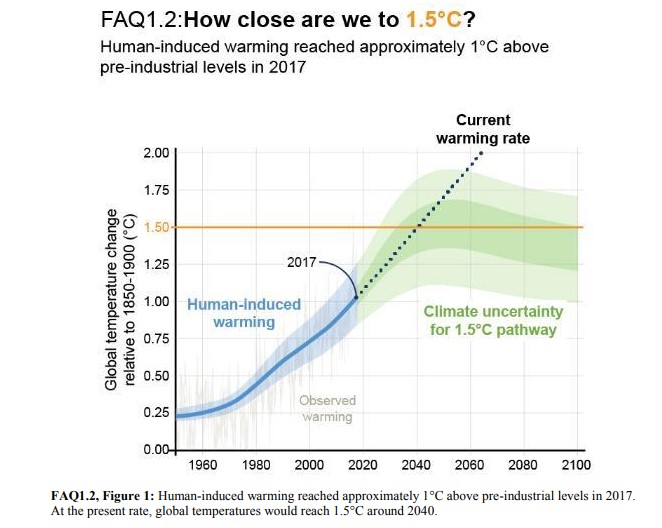By Samantha Caputo | Fri, October 12, 18
A timer is ticking, and just when you think you know how much time is left until the buzzer rings, you are presented with a new target. An Intergovernmental Panel on Climate Change (IPCC) special report finds that limiting global warming to 1.5°C requires “rapid and far-reaching” transitions in land, energy, industry, buildings, transport, and cities. Global carbon dioxide (CO2) emissions need to fall by 45 percent from 2010 levels by 2030, reaching net zero by 2050.
States throughout the Northeast and Mid-Atlantic have adopted goals and are implementing policies to aggressively cut carbon emissions by the year 2050. Yet, in order to avoid catastrophe at the current warming rate, there needs to be a drastic change in the way we produce and use energy. Three core strategies can be used - deep energy efficiency, low-emitting or clean energy, and strategic electrification – for Northeast states to achieve aggressive carbon reduction commitments. To some degree, states are taking these actions, but more integration is needed in the way these strategies are implemented.

Figure 1 IPCCC Special Report SR15
With public policy goals such as carbon reduction in place, states have moved towards the integration of these strategies, but other steps need to be taken, such as using new metrics to track progress towards decarbonization and aligning cost-effectiveness testing with state policy goals. Connecticut Department of Energy and Environment (DEEP) Commissioner Mary Sotos states that “it’s important to us [Connecticut] to make sure that the metrics that we’re applying to our programs actually match what we are trying to accomplish. Depending on how much you value carbon, or other environmental impacts, the cost-effectiveness of certain programs can potentially look very different.” Metrics benefit decarbonization by providing consistent approaches to evaluating cost-effectiveness.
Massachusetts provides an example of this with the Act to Advance Clean Energy in the Acts of 2018. The provisions support incorporating innovative technologies into ratepayer-funded efficiency programs, including energy storage, active demand management technologies, and strategic electrification, as well as support for greater flexibility in sector-level cost-effectiveness review. The three-year energy efficiency plan includes new metrics, MMBtus for all fuels and demand savings (kW), to support the integration of these technologies.
By broadening cost-effectiveness to include other benefits besides energy savings, a door is opened to any state to revisit its cost-effectiveness test to ensure the proper benefits and costs are included to support the innovative technologies now included in energy efficiency programs. States can do this by using the National Standard Practice Manual (NSPM).
The NSPM can help states critically review the current cost-effectiveness test to ensure it is aligned with public policy and considers all costs and benefits applicable to its programs. The NSPM does not advocate for the inclusion of certain non-energy impacts, but instead helps states identify any non-energy impacts that should be included based on its specific public policy goals (e.g., carbon reduction, deferred or avoided T&D costs, health, safety, resiliency, economic development).
The world of energy and electricity consumption is in the midst of change, heading towards increased electrification of buildings and transportation and a grid dominated by variable resources. As this change continues, energy efficiency’s role can broaden; it will contribute to multi-sector planning and grid management. As such, the way we value energy efficiency needs to evolve by incorporating non-energy impacts.
Massachusetts isn’t the only Northeast state to refine metrics based on carbon reduction goals. Other states in the region (e.g., Connecticut, Rhode Island, and New Hampshire) are similarly considering revisions to cost-effectiveness criteria and practices in energy efficiency planning to include the full range of energy efficiency impacts aligned with public policy goals including, but not limited to, health, safety, and environmental benefits. One example outside the Northeast is Minnesota, which recently developed the “Minnesota Test”.
The NSPM is a tool that is important in the midst of industry changes because it is designed to consider policies that address goals beyond energy efficiency. Unlike the silos established between the traditional cost-effectiveness tests that states currently use, the NSPM eliminates the notion that a test with a fixed set of benefits and costs drives the design of energy efficiency programs.
There is an interconnectedness between energy and the environment, which means programs to achieve carbon reduction should work together and acknowledge the benefits between energy efficiency, distributed energy resources, and strategic electrification. The NSPM provides the principles that enable that and hopefully accelerate our region’s progress in limiting carbon emissions.
